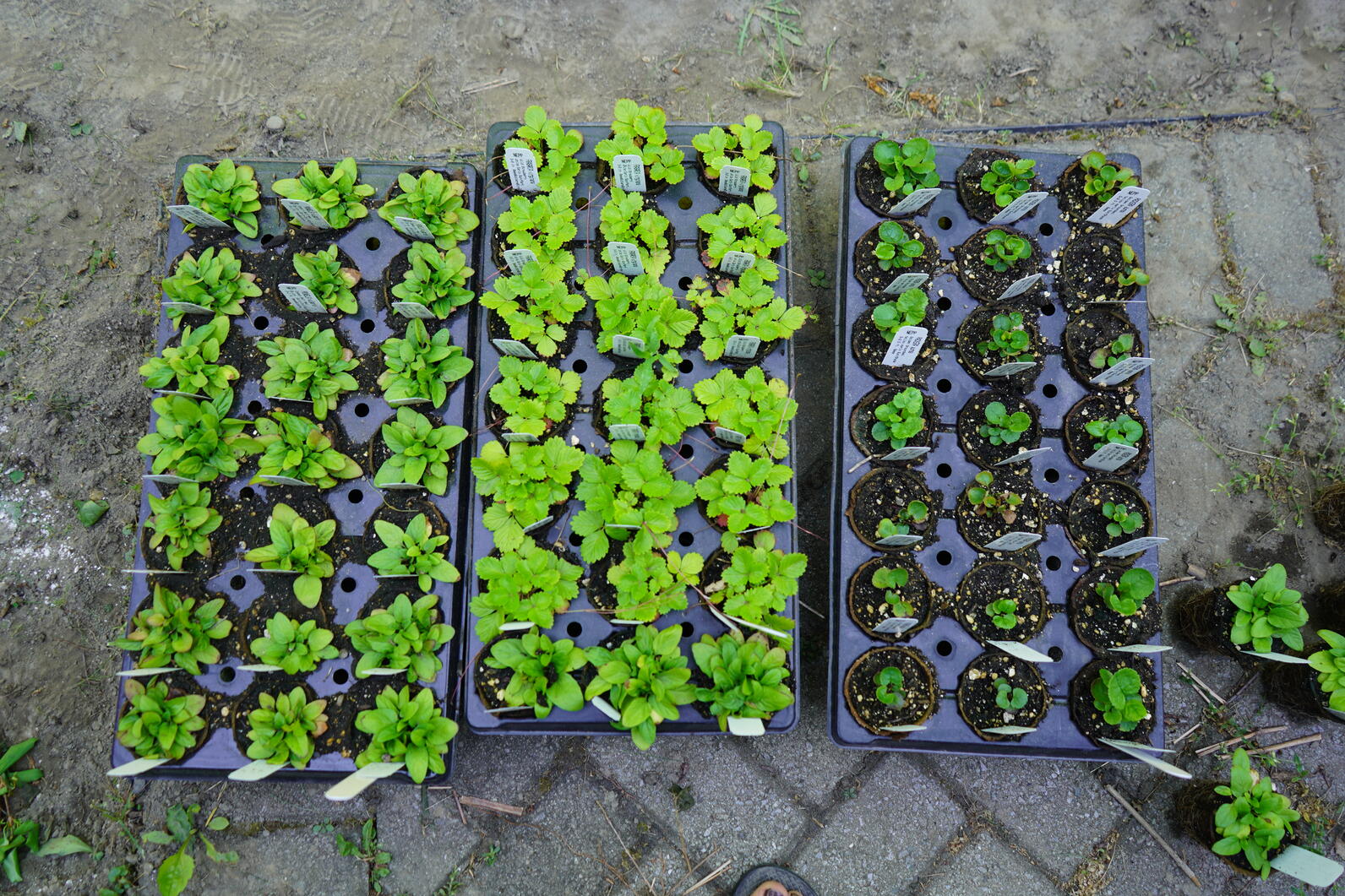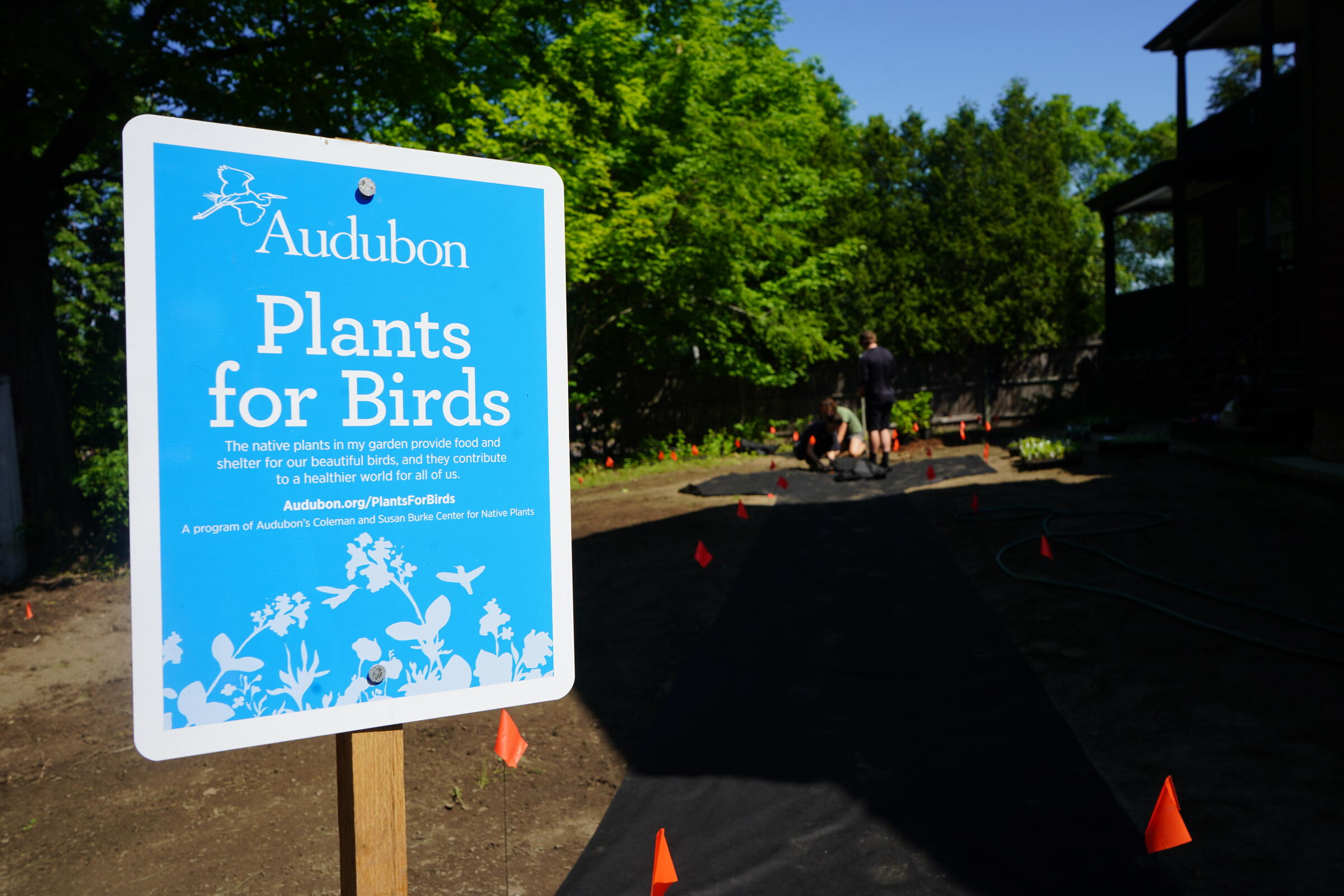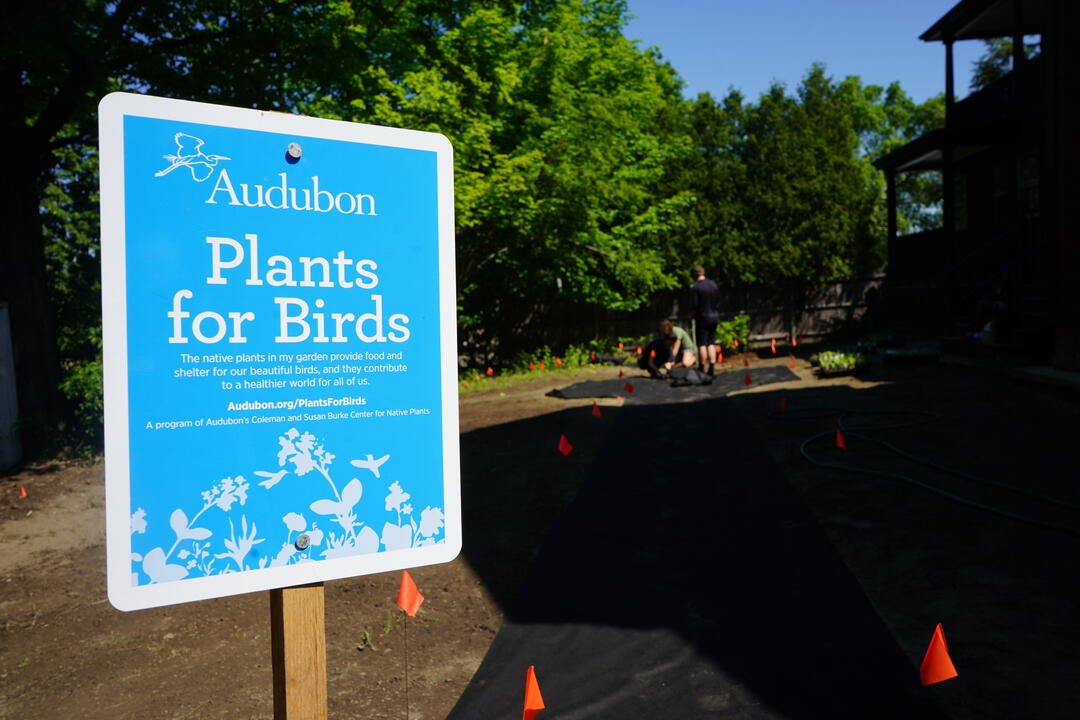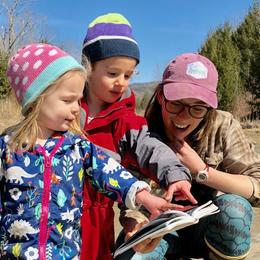Last spring Audubon Vermont collaborated with the University of Vermont to replace a lawn with a bird-friendly pollinator demonstration garden at the environmental studies building on campus. Learn the benefits of bird-friendly plantings and how you can start one in your space!
Climate change is affecting birds in a big way, and one way you can help is to create bird-friendly spaces - big or small. Last year we worked with a couple of students to make their capstone dream a reality; transforming the lawn of the University of Vermont's Environmental Studies building into a bird-friendly pollinator space.
Audubon Vermont has been creating bird-friendly spaces through native plantings over the past few years and this was another addition to the network. As these plantings come together their impact makes Burlington, Vermont and the University of Vermont an oasis for birds and pollinators.
Check out this page to see more plantings throughout Burlington. To read more about the effects of climate change on birds and how bird-friendly spaces can help check out this article.
Would you like an Audubon Plants for Birds sign for your garden space? Click here to order your sign and help spread the word about the benefits of native plants for birds and pollinators.

What is a bird-friendly space anyway? All living things need: food, water, shelter, and space to survive. A bird-friendly space includes just that. Birds and all creatures have co-evolved with species to survive in their niche. For instance, in the forest of northeastern United States the Cape May Warbler, Blackburnian Warbler, Black-throated Green Warbler, Bay-breasted Warbler, and the Myrtle Warbler feed in the same types of trees and would be seen as competitors, but because they each nest in a different portion of the tree-- from the outer top to the inner top, the middle outer part, and the middle inner and so on-- they do not compete.
Plantings create shelter for birds and depending on the species they can also create food such as berries, seeds, or nuts. But more importantly, plants create habitat for insects and 96% of land birds feed their young insects so this is especially important for our populations to continue to be successful. “Chickadees need 6,000 to 9,000 caterpillars to feed one clutch,” according to Douglas Tallamay. Keep in mind that each fledgling only weighs the equivalent of 4 pennies.
Just as birds have evolved with spaces and species of plants so have insects, thus native plants will attract more insects. For example, Joe-Pye weed is a summer-flowering plant that supports 41 species of caterpillars, an oak will support 557 species of caterpillars while a non-native Ginko only supports 5 species of catapillar.
You do not need a large yard to provide a native bird-friendly space. No matter where you live native plants will be beneficial, even if you hang plants from your balcony on the fourth floor. You can use the Native Plant Database to find native plants in your region. Suburban and urban areas are critical for birds, but plants in those areas tend to be about 80% NON-native (Doug Tallamy). Native plants offer complete nutrition for birds and non-native plants are a population sink. We can all work to make them more supportive to both migrating and breeding species by replacing non-native plants with natives. Check out this site to learn more about how to identify and remove land invasive plants.
It was so exciting to collaborate with UVM to make one unproductive lawn space into a perennial bird and pollinator-friendly space. Learn more about the students and the process here! We enjoyed being a community partner and counseling Liza Bryan and Caitlyn Williams on how to engage the community, the process of a project on this scale, and giving input on what plants will be most beneficial to birds in that space. These two worked very hard to make this vision a reality.
Next time you are in Burlington be sure to visit the garden! You may not think that one yard can't make a difference, but when added together, the impact can be huge!
Bird-Friendly Pollinator Planting at the University of Vermont
Research and data on caterpillar numbers thanks to Professor Doug Tallamy.






